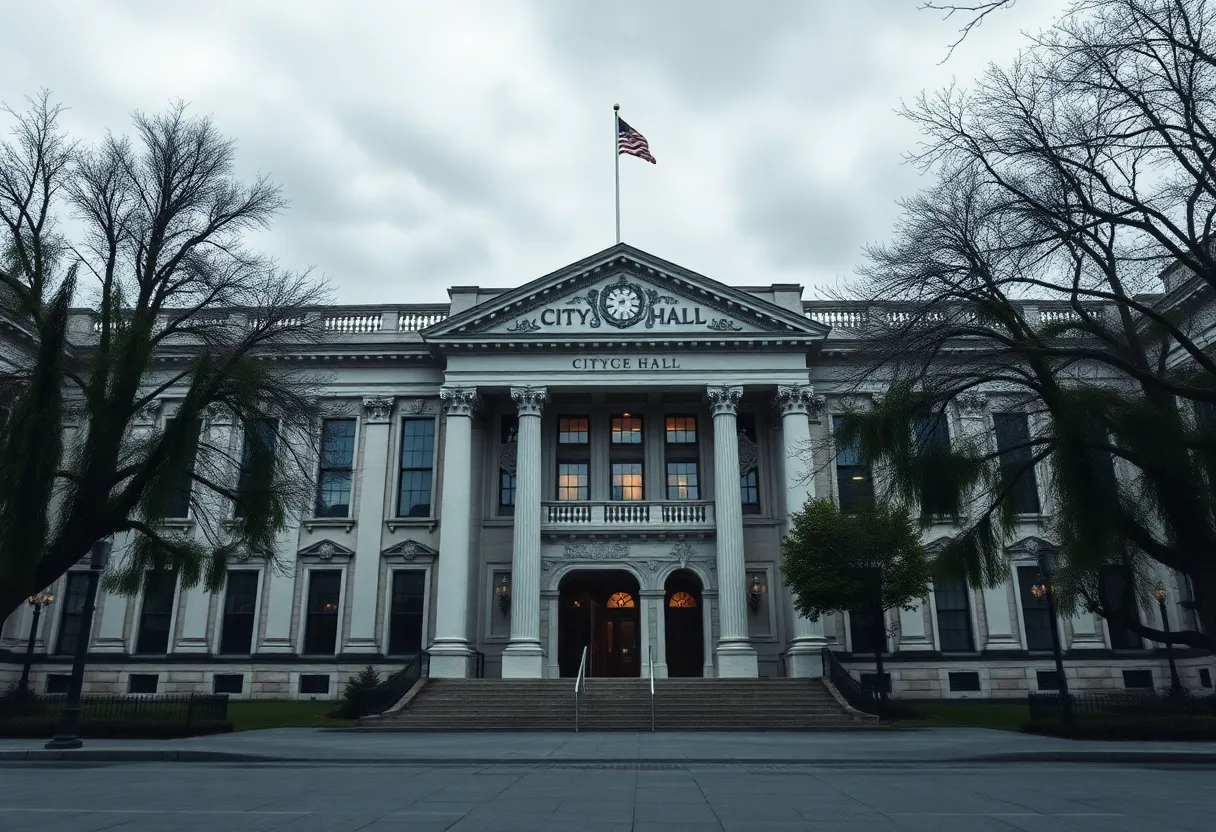News Summary
California is grappling with a projected $16 billion revenue shortfall linked to President Trump’s tariff policies. This decline, marking a 4% decrease from prior estimates, could cripple the state’s economy, particularly in agriculture and manufacturing. Major companies report significant profit losses, and food prices are expected to soar. With heightened tariffs impacting trade flows, California’s economic stability is under threat, prompting concerns from experts about long-term repercussions.
California is bracing for a staggering $16 billion revenue shortfall due to President Donald Trump’s tariff policies, which are expected to significantly impact the state’s economy in the upcoming fiscal year. This projected decline represents a 4% decrease from previous estimates and comes largely as a consequence of a recent downturn in the stock market triggered by the announcement of tariffs on April 2.
The anticipated financial repercussions encompass substantial losses across various sectors. A notable $10 billion is expected to stem from reduced capital gains, while lower corporate profits will account for approximately $2.5 billion. Additionally, a reduction in personal income tax receipts—including wages and business incomes—is forecasted to result in a $3.5 billion loss.
The ramifications of these tariffs extend beyond immediate financial concerns. The trade policies have disrupted crop trading, delayed vital purchases such as tractors, and hindered the import of essential chemical supplies into the country. This disruption has caused significant challenges for large agricultural businesses, with recent quarterly earnings reflecting the adverse effects of the ongoing trade war.
Major companies like Archer-Daniels-Midland Co. and Bunge Global SA have reported a combined operating profit decrease of roughly $750 million in the first quarter. As a direct impact of the tariffs, importers are now hesitating to purchase U.S. grain and oilseeds, leading to altered trade flows. For instance, Mosaic Co. has indicated that shipments of phosphate, a crucial ingredient for crops, are down compared to last year because vessels are being diverted to avoid U.S. tariffs.
Farmers face the prospect of rising prices for pesticides, with expectations of cost increases that could be as high as 7.5%. In contrast, Brazil is capitalizing on the trade tensions, experiencing a surge in demand from China along with higher export prices for its beef.
The trade conflict has escalated further with China imposing a retaliatory 34% tariff on U.S. goods, creating additional complications within the agricultural sector. This development is especially concerning for California, known as the largest importer and the second-largest exporter among all U.S. states, with trade amounting to over $675 billion in two-way transactions.
Food prices are projected to rise in California due to these tariffs, affecting essential products such as avocados, milk, and almonds. The state’s almond industry, which exported $4.7 billion worth of products in 2022, stands to suffer significant losses, with estimates suggesting a potential decline of $875 million due to trade restrictions.
Economic experts have voiced concerns regarding the long-term ramifications of retaliatory tariffs on California agriculture and overall economic growth. The Port of Long Beach anticipates a 35-40% reduction in business as a result of tariff uncertainties, casting a shadow over job stability for dock workers and truckers. Meanwhile, the Port of Los Angeles could see a 10% drop in cargo volume, further threatening job opportunities in the area.
The entertainment and manufacturing sectors in California are also poised for significant challenges. Increases in production costs resulting from tariffs may lead to job losses across these industries if the situation escalates.
President Trump has implemented these tariffs in an effort to narrow a substantial $1.2 trillion trade deficit. These tariffs are scheduled to take effect between April 5 and 9, signifying the beginning of a potentially turbulent economic period for California and its critical agricultural and manufacturing sectors.
Amid this ongoing trade conflict, stakeholders in California’s economy are bracing for an uncertain future, with many watching closely how these policies will unfold and affect their livelihoods.
Deeper Dive: News & Info About This Topic
- Los Angeles Times
- Wikipedia: Trade War
- San Francisco Chronicle
- Google Search: Trump tariffs impact California
- ABC7 News
- Encyclopedia Britannica: Tariff
- Wall Street Journal
- Google News: California tariffs
- Newsweek
- Google Scholar: Trump tariffs California

Author: Anaheim Staff Writer
The Anaheim Staff Writer represents the experienced team at HEREAnaheim.com, your go-to source for actionable local news and information in Anaheim, Orange County, and beyond. Specializing in "news you can use," we cover essential topics like product reviews for personal and business needs, local business directories, politics, real estate trends, neighborhood insights, and state news affecting the area—with deep expertise drawn from years of dedicated reporting and strong community input, including local press releases and business updates. We deliver top reporting on high-value events such as major conventions at the Anaheim Convention Center, including NAMM and VidCon, exciting games at Angel Stadium and Honda Center, and developments at Disneyland Resort Our coverage extends to key organizations like the Anaheim Chamber of Commerce and Visit Anaheim, plus leading businesses in hospitality, entertainment, and innovation that power the local economy As part of the broader HERE network, including HERECostaMesa.com, HEREHuntingtonBeach.com, HERESantaAna.com, and HERELosAngeles.com, we provide comprehensive, credible insights into Southern California's dynamic landscape.




